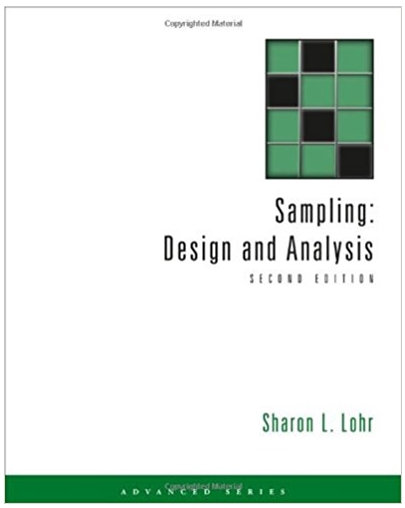An alternative approach to linearization variance estimators. Demnati and Rao (2004) derive a unified theory for linearization
Question:
θ= g (w, y1, y2. . . yk ),
Where w= (w1. . . wN)T with wi the sampling weight of unit i (wi =0 if i is not in the sample), and yj is the vector of population values for the jth response variable.
Then a linearization variance estimator can be found by taking the partial derivatives of the function with respect to the weights. Let
-1.png)
Evaluated at the sampling weights wi. Then we can estimate V (ˆθ) by
-2.png)
For example, considering the ratio estimator of the population total,
-3.png)
The partial derivative of ˆθ = g (w, x, y) with respect to wi is
-4.png)
For an SRS, finding the estimated variance of ṫz gives (4.11).
Consider the post stratified estimator in Exercise 17.
- Write the estimator as ṫpost =g (w, y, x1. . . xL), where xli =1 if observation i is in post stratum l and 0 otherwise.
- Find an estimator of V (ṫpost) using the Demnati€“Rao (2004) approach.
Fantastic news! We've Found the answer you've been seeking!
Step by Step Answer:
Related Book For 

Question Posted:





